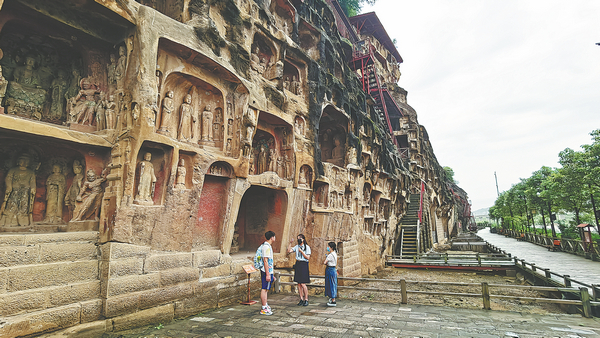A hotbed of history

The Cliff of 1,000 Buddhas, or Qianfoya, an important ancient cultural relic site along the Shu Path. Its construction started during the Southern and Northern Dynasties (420-581). [Photo by Huang Leran for China Daily]
As the pass was the only passageway to North China, almost every ambitious ruler who wanted to conquer Sichuan had to first take the pass. Since 316 BC, some 100 battles have been fought there. Because the pass is so steep, not a single frontal attack has been successful.
Another grand sight on the Shu Path is the Cuiyun Corridor, a 150-kilometer-long, stone-paved, cypress-shaded post road.
In ancient times, important letters of state were carried by horseback couriers along the thoroughfare.
As snow often covered the road in winter and the summer sun gave the couriers a scorching ride, local officials ordered cypresses to be planted on both sides of the road, to provide shelter and shade all year round.
The planting, which began in the Qin Dynasty (221-206 BC), lasted until the Ming Dynasty (1368-1644). By then, in excess of 100,000 cypresses had been planted-more than 8,000 of which survive to this day.
